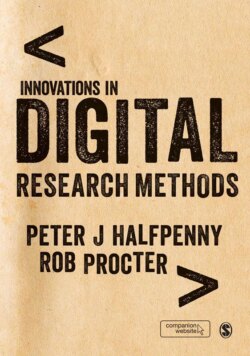Читать книгу Innovations in Digital Research Methods - Группа авторов - Страница 42
На сайте Литреса книга снята с продажи.
2.2.3 Innovations in Linking Data
ОглавлениеMethodologically, there are increasing opportunities to address research questions by data linking using statistical matching and drawing on multiple data sources. Well known examples of this include: the linking of hospital data to the Millennium Cohort Study26 (see Calderwood, 2007); the Work and Pensions Longitudinal Study (WPLS)27 which links benefit and programme information held by the Department of Work and Pensions (DWP) with employment, earnings, savings, tax credit and pension records from HMRC; and the Longitudinal Study of Young People in England (LSYPE),28 which links annual survey data to data from the School Census29 (as discussed below).
The methodology of data or record linking can be simply one of matching record numbers between multiple sources but can also be probability based. This involves linkages based on similar characteristics as opposed to unique identifiers. Computational statistical techniques are involved in optimizing record matching rules and weighting different variables in the matching process. Data preparation is a key stage of this research design. Account needs to be taken of missing data and data entry errors and quality assurance procedures need to be put in place. For further discussion see Herzog et al. (2007).
It is argued that data linkage can be cost saving and enable analyses to be conducted that would otherwise not be possible or would involve further primary data gathering. Best practices for linking data and the research and ethical issues raised are slowly being developed. A key aspect of this is the terms of use of the different data sources. Some surveys now ask for the respondent’s permission for the anonymous use of their responses for the purposes of linking with other datasets. Examples include the National Survey of Wales and the Scottish Longitudinal Study. The UK’s Economic and Social Research Council is presently reviewing the area of data access and linkage as part of its Administrative Data Task Force (see Boyle, 2012).30 The International Health Data Linkage Network is a useful information resource on linked data.31 For further discussion see Gill (2001), Herzog et al. (2007), Mason and Shihfen (2008) and Chapter 3 in this volume.
